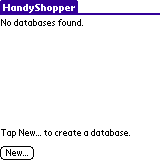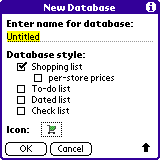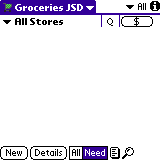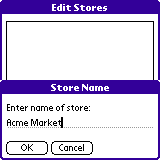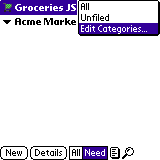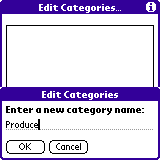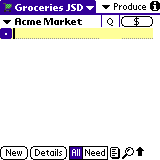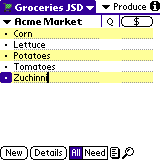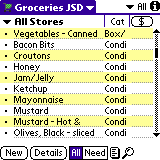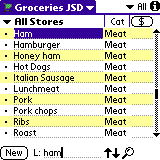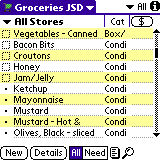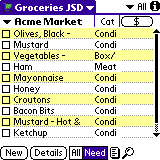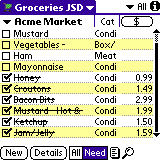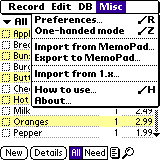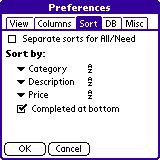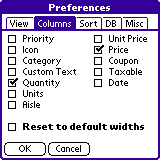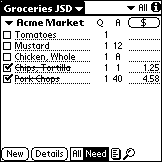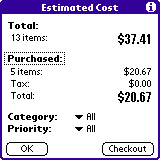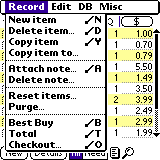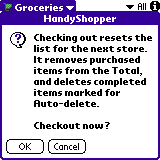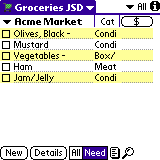This is an example of an alternate method of assigning aisles to items that has worked well for some users at some stores. Let it serve as an example of creative use of the abilities of HandyShopper. If this method works for you, then great! But feel free to tweak it or use some ideas from this method in your own method.
- First, consider all store aisles on HandyShopper as "tens" -- Aisle 1 in the store are aisles 10-19 on HandyShopper, Aisle 2 in the store are aisles 20-29 on HandyShopper, etc.
- Second, begin numbering the sections within a store aisle in an orderly manner. The first "end-cap" is given a "0" aisle extension (10, 20, etc.)
- As you go down the aisle, assign the first section on the left as a "1" aisle extension (11, 21, etc.), the section opposite it is given a "2" aisle extension (12, 22, etc.) (Figure 1.18)
- Reserve the "0-9" aisles for items that are "first in" items — bread, produce, sales items, bakery, etc. — depending upon each store's layout. Also, reserve the "A-Z" aisles for "last out" items — deli, bakery, film, video rentals, floral, etc. — as well as any items you specifically *want* to pick up last (frozen foods, deli baked items, etc.)
|
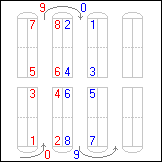
Figure 1.18
|
